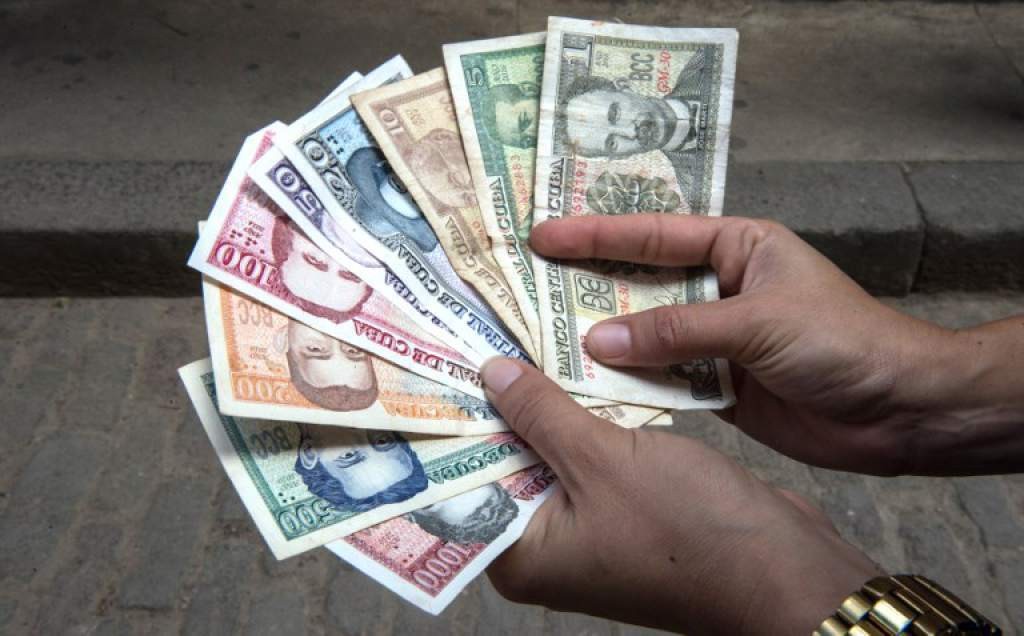Currency and Exchange Unification in Cuba: Regulations, Effects, and Perspectives (Part II)
It remains to be seen whether the increase in wages, pensions and social benefits will compensate for the rise in prices; if not, social tensions will worsen.
By Carmelo Mesa-Lago, Distinguished Professor Emeritus of Economics and Latin American Studies, University of Pittsburgh
Potential Effects of the Unification
The short-term effects will be adverse: inflation, unemployment, and a substantial reduction in purchasing power if salaries and pensions are below the rate of inflation. The promise to subsidize the vulnerable is difficult to keep. In the medium and long term, the effects could be positive as long as the unification meets the necessary standards.
Inflation
President Miguel Díaz-Canel warned that “one of the main [risks of the unification] is that inflation be higher than what was planned .” Among the general population, the devaluation of the CUP does not affect inflation because the rate remains at 24, as before. However, within the enterprise sector, as the exchange rate has risen from 1 to 24, the production costs of state-owned companies will increase in tandem with the devaluation, rising wholesale prices, which in turn will affect retailers, and inflation will skyrocket.
Here’s an example: If a state-owned company had been importing goods in dollars and in its accounting 1 CUC was equal to 1 dollar, the real cost of imports was reduced artificially, therefore incentivizing importing. By eliminating the CUC and setting the exchange rate of 24 CUP per dollar, the import cost is multiplied by 24, which reveals the real value of imports and disincentives them. Therefore, the company's prices must go up to cover the cost of production, which fuels inflation. On the other hand, for exportation, 1 dollar was equal to 1 CUC, but now it is multiplied by 24, which shows its real value, increases the income of exporting companies, and is an incentive to export.
The official inflation rate was -2.9% (deflation) in 2016 and -1.3% in 2019, but it has been undervalued for decades:
- The government, rather than the market, sets the vast majority of prices;
- The consumer price index (CPI) has been based only on the population's purchases in CUP; excluding the CUC, with which people acquire many goods and services;
- The CPI is also devalued by “repressed inflation,” manifested in increasingly long lines; and
- Prices in the informal and black market, governed by the law of supply and demand, have skyrocketed in recent months.
For example, a carton of 30 eggs, which cannot be bought in state stores, could be purchased on the free market for many years for 87 CUP and by the end of 2020 it cost 175 CUP, double its previous price. A pound of pork, a good indicator of the cost of food in Cuba, has also doubled, from 24-25 CUP in 2018 to 50-70 CUP in December 2020.

An alternative way to measure inflation is “monetary liquidity” (M-2): the amount of currency that the population has in their hands or deposited in their bank accounts. An increase in the M-2 indicates a rise in inflation. In the 1990s, the surplus of currency in circulation fueled demand, but there were insufficient goods to satisfy it. The M-2 with respect to GDP rose from 25.3% in 1990 to a historical record of 73.1% in 1993; then, with a partial recovery, it fell to 34.1% in 2004. But monetary emission made it increase again from 36.4% to 58.9% between 2007 and 2018; that last figure exceeded those from 1992 and 1994 (56.1% and 51.7%, respectively). It reached its peak of 73.1% in 1993, the worst year of the crisis.
The previous M-2 series was changed in the 2019 Anuario Estadístico de Cuba. This was the result of the fact that as of 2017, “balances in CUP and CUC were included” in bank accounts. Previously, only accounts in CUP were reported. The result was a notable jump in the M-2 with respect to GDP: in 2017 it went from 52.8% to 96.6%, in 2018 from 58.9% to 100.3%, and in 2019 up to 103.4%. We cannot compare the old series with the new one (except in 1989 and 1993–1994, when bank accounts were only in CUP). The population possessed more money than the value of GDP in 2019; that is, there has been a huge monetary emission, greater than in 1993. The devaluation of the CUP will increase this proportion and will greatly aggravate an already very high inflation rate.
Marino Murillo, in charge of the follow-up of the economic reforms, explained three ways to prevent inflation from increasing more than planned.
- First, maintain the centralized price of a group of products, especially those that have a large economic impact.
- Second, impose caps on the wholesale prices at the enterprise sector.
- Third, “to guarantee greater supply [by increasing production], but in the current conditions of the Cuban economy that is not a feasible strategy ... given our supply deficit.”
Unemployment
The unemployment generated by the unification requires a deeper explanation. The open (“visible”) unemployment rates indicate a decline from 7.9% to 1.3% of the labor force between 1989 and 2019—one of the lowest levels in the world—which would suggest full employment. However, since the beginning of the Revolution, there has been a growing labor surplus in the state sector. A hypothetical example illustrates this: If the government creates a factory that needs a maximum of 100 workers, but employs 200 to reduce open unemployment, which also halves labor productivity and wages, and increases “hidden” unemployment, the manpower that the factory doesn't really need.
My doctoral thesis (1968) proved that the above example was widespread in the Cuban state economy, refuting the generalized belief of full employment. During the crisis in the 1990s, when GDP fell 35% between 1989 and 1993, the labor surplus grew enormously because, in order to prevent a jump in open unemployment, the government did not fire workers from closed state enterprises; rather, it continued to pay them their salaries and subsidizing the companies, which reduced productivity and wages and increased the fiscal deficit and prices. According to ECLAC, hidden unemployment grew from 7.9% of the labor force in 1989 to a peak of 34% in 1993 and fell to 21% in 1998; in 1993, open plus hidden unemployment was 40%.
It took the government 42 years to come to terms with the reality of hidden unemployment. In 2010-11, official figures on unnecessary employment in the state sector (“inflated payrolls”) were released. Workers would be laid off and then employed in the non-state sector, with these goals: 500,000 in 2010, one million in 2011 and 1.8 million between 2011 and 2015. But by the end of 2014, only 418,000 superfluous state employees had been laid off, and in 2016 the layoffs ended, so that in the target year 2015, there were still 1.3 million surplus employees. The growth of the non-state sector was insufficient to employ all the surplus state employment. When the layoffs began, open unemployment rose from 1.7% in 2009 to 3.5% in 2012, but declined consistently to 1.3% in 2019. I estimate that in 2018 open unemployment was 1.7%, hidden unemployment was 29.2%, and total unemployment was 30.9%. In 2019, when a record declared unemployment of only 1.3% was reported, hidden unemployment would have been around 29%—on the eve of the unification.

The government has repeatedly announced that there will be no “shock therapy” due to the unification, nor mass layoffs, thus repeating its policy of the 1990s. Due to the economic crisis, between April and October 2020 there were 150,000 state employees who did not work because their enterprises had closed, were paid their salaries, and 250,000 self-employed workers with temporary suspensions of their licenses—a total of 400,000 workers, equivalent to 8.7% of the employed labor force. Those who were not in this situation “have had a low level of activity,” another clear indicator of hidden unemployment.
The devaluation of the CUP will increase enterprises’ production costs and, as the authorities have warned, they will endure major losses. It is assumed that the government will stop subsidizing the losses of 40% of state companies, as they are financially unsustainable and should close. But, to reiterate, the state will allocate resources to sustain these companies during a transition year, helping them adjust to the new conditions. If, after the transition, the subsidies end and the enterprises close, their workers will be unemployed. In short, the layoffs resulting from the unification will be added to the hidden unemployment in 2020. Total unemployment could exceed 30%, although if self-employment is allowed to expand unhindered and without excessive taxes, it could absorb state unemployment.
Purchasing Power of the Population
The official discourse also promises that the population will be protected from price increases through an increase in wages and pensions that is greater than the increase in prices. Murillo said: “In economics there is a difference between real and nominal wages. Our aspiration is that all employees end up with better conditions than at the starting point.” Nominal wages grew from their lowest point in 1993, but real wages (adjusted for inflation) in 2019 were equivalent to 47.3% of their value in 1989, reducing purchasing power by 52.7%. On the other hand, the nominal average pension in 2019 was equivalent to 64.3% of its real value in 1989; it suffered a devaluation of 35.7%.
It is virtually impossible for the government to raise wages above the price hike to improve their real value. Even increasing wages, pensions, and social benefits will not offset the effects of devaluation and inflation. It will be a continuation of the policy practiced between 1989 and 2019 of real deterioration of said payments that will satisfy even fewer basic necessities.
The previous analysis confirms the importance for the government and the country to expand the non-state sector, especially the private sector and the self-employed (cuentapropistas). Between 2010 and 2019, the non-state sector expanded from 16.2% to 32.9% of the employed labor force, while the state sector contracted from 83.8% to 67.1%. Within the non-state sector, the private sector grew from 11.8% to 22.5% and within this, self-employment rose from 3% to 13.4%. In 2019, employment increased by 102,500 workers, 89% in the non-state sector and only 11% in the state sector. In the non-state sector, 83% was in the private sector (35% were self-employed) and only 6% in cooperatives.
However, an increase of only 32,000 employed people is projected in 2021—69% in the state sector (where employment should be reduced) and only 31% in the non-state sector, which should be expanding. Díaz-Canel has said that “some economists, when they speak of unlocking the productive labor forces, only consider the private sector,” while for the government the main economic actor is “the state enterprise sector and, as a complement to it, the private sector.”

Nonetheless, the government has taken positive steps regarding the non-state sector.
- In November, it announced that 7,000 state restaurants would be leased to cooperative members and self-employed workers and that the licensing approval procedures would be simplified;
- The non-state sector was also permitted to sell products and services directly to the Mariel Zone.
- The self-employed were also authorized to deduct all their expenses from their income, establishing a minimum income of 39,120 CUP per year exempt from income tax, and the exoneration of personal income tax for self-employed workers who had to suspend their activities in 2020 due to COVID-19.
The most important measure was issued on February 13, 2021: the list of 127 permitted self-employment activities (most of them with low added value, while the Cuban labor force has a very high and underutilized level of education), will be expanded to 2,000, including industry, and only 124 prohibited activities will be reserved for the government.
Cuban academic economists (Carranza, Monreal, Pérez Villanueva, Torres, Triana, Vidal and others) have clamored for this measure for years, and there is a consensus among them that it is an important step, albeit with several cautions: an enterprise law must be enacted regulating small- and medium-enterprises’ activities and relations with the state sector, to grant them autonomy and guarantees, and to allow foreign investment. The prohibited activities include social services, exploitation of natural resources, and strategic activities. In addition, all professional activities in the non-state sector are banned (architecture, engineering, communications, etc., except veterinary services but limited to domestic pets), those are the occupations that require the most qualifications and generate the highest value added . A request must be made in order to receive state authorization, inputs must be legal, and it is still unknown if limits will be imposed on the scope of the activities. These concessions are essential because the self-employed have been hit hard due to the pandemic, the fall in tourism, and the currency unification.
The authorization to non-agricultural microenterprises and cooperatives to export and import is positive, although strong restrictions are maintained: the requirements to do so through state-owned companies, hold bank accounts in foreign currency, and confirm that the origin of the funds deposited from abroad is “totally lawful.” They must have specific authorization from the Central Bank of Cuba, and goods and services exported must be of good quality and competitively priced, all of which is not required of state-owned enterprises.
Other necessary measures are:
- The development of wholesale markets;
- The elimination of bureaucratic obstacles such as the 29 documents needed to obtain a self-employment license;
- The standardization of norms for the state and non-state sectors, and
- The creation of a bank to offer low-interest loans to the non-state sector, among others.
All of this must be done quickly, without obstacles or disincentives.
Replacement of Price Subsidies with Subsidies for Vulnerable People
Since he began his structural reforms in 2007, Raúl Castro has proclaimed that improper subsidies and gratuities, including rationing, would be gradually eliminated because subsidized prices may be justified for low-income citizens, but not for high-income citizens. Therefore, many food items and other consumer goods were taken off the ration booklet and sold at a price based on supply and demand, which markedly increased prices and reduced the purchasing power of people’s wages and pensions. The return of the economic crisis in 2019–2020 generated an acute shortage of food and consumer goods, which forced the government to return several of these products to the ration booklet.
According to government authorities, a central objective of the monetary unification is the elimination of the aforementioned subsidies and gratuities, however, subsidies for products with a high impact on the population will remain until the subsidy to those vulnerable is generally adopted. Taking into account that this objective has been under discussion for a decade and was expected to be fulfilled at the time of the unification, it is fiasco that it will be postponed again without a clear deadline.
The replacement of price subsidies with subsidies to vulnerable people is appropriate because, in addition to targeting the low-income population, the unification itself will expand the vulnerable population requiring social assistance, although the replacement will be postponed. The expansion of this vulnerable population began with Raúl Castro's structural reforms that reduced social spending. This in turn decreased access to and the quality of social services such as education and health, as well as housing construction, and there was a decline in the purchasing power of salaries and pensions. Although this situation should have led to an expansion of social assistance, the opposite occurred: between 2006 and 2019, the beneficiaries of such assistance decreased from 5.3 to 1.5 per 1,000 inhabitants, while social assistance spending relative to GDP decreased from 2.2% to 0.4% in the same period.
If the government was not able to expand subsidies to the vulnerable population when the economy was in a better situation, particularly between 2006 and 2015, it will be extremely difficult to do so now when it is going through the worst economic crisis since the 1990s. As discussed, the unification will cause an increase in inflation and unemployment, thus further expanding the vulnerable population, all of which has been worsened by COVID-19.
Positive Effects in the Medium and Long Term
The unification process must be conducted in an adequate manner, meaning that:
- Enterprises operating at a deficit are closed after the transition period,
- Fiscal subsidies are eliminated;
- Workers in failed companies are laid off in addition to laying off the previous surplus labor (hidden unemployment) in state-owned enterprises;
- No price caps are imposed to curb inflation;
- Wages and pensions are adjusted above price increases;
- The private sector is expanded to absorb open and hidden unemployment; and
- Above all, the necessary parallel reforms are undertaken, especially in agriculture.
If those conditions are met, then several potential long-term positive effects will take place:
- State-owned companies will become more efficient;
- Exports and production (particularly in agriculture) will increase;
- Imports will be reduced;
- The balance of payments will improve;
- Inflation will be controlled at reasonable levels; and
- Economic growth will resume.
All of this will generate resources to finance and improve state social services, including a minimum safety net of protection for the vulnerable population affected by the currency unification. This view might be overly optimistic, but China and Vietnam have demonstrated that it is feasible, except for the minimal safety net.
Conclusion
The Cuban government has initiated the necessary currency and exchange unifications but it has postponed several of its key elements for at least a year. This will defer its positive long-term effects, but it will not prevent short-term negative impacts such as inflation, and it remains to be seen whether the increase in wages, pensions, and social benefits will offset the rise in prices; if not, social tensions will worsen. Facing this difficult process in the midst of the worst financial crisis since the 1990s makes it even more traumatic. Finally, there is the possibility that, after the transition year, fiscal subsidies to inefficient state-owned enterprises that suffer losses will continue.

